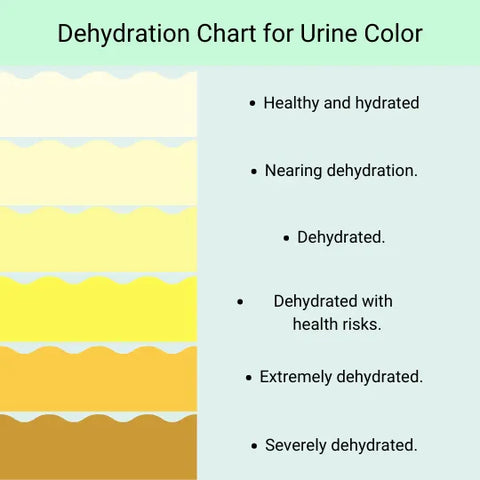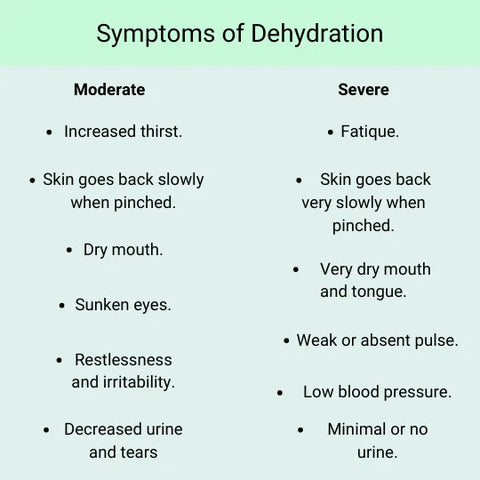
our workout is over. You’re drenched in sweat. You’re probably wondering how to rehydrate your body, so that you won’t suffer from dehydration. So you search for the fastest way to rehydrate.
You might reach for plain water. Of course, plain water will rehydrate you in time. But when we sweat, we also lose electrolytes, which help our cells regulate the balance of fluid inside and outside their membranes. This is why plain water alone won’t always cut it.
Another consideration is how you intake fluid. Drinking water means fluid takes a long path to reach your cells. Intravenous administration is faster, but it requires the help of a medical professional. This might not be practical for your daily routine.
Below, we cover every way to rehydrate quickly in depth by time, price and effort. But first, here are some of the reasons you might need to recover from dehydration.

In order to treat dehydration properly, it helps to know how severe your needs are for recovery. For this, you can use our dehydration chart to examine the color of your urine to understand how dehydrated you are.
You can also check for symptoms of dehydration if you’ve endured any of the common causes of dehydration. For additional information on the complete science of hydration, be sure to check out our comprehensive guide, How to Rehydrate.

The fastest method for rehydrating patients is the medical technique of intravenous (IV) fluid replacement. This sends electrolyte-balanced fluids directly into the blood stream so it gets distributed by your blood cells throughout the body almost immediately.
However, medical professionals generally only recommend this method for severely dehydrated patients who are in shock and cannot sit up on their own. These patients exhibit symptoms like low blood pressure, lethargy or unconsciousness. Therefore, it is often reserved as a last resort for only the most severe cases of dehydration.
In this case, medical professionals should monitor the dehydrated patient for recovery every 10-15 minutes and switch to an ORS once the patient has recovered enough to sit up on their own, according to the CDC.
However, a trend for rehydrating at a “drip bar” has begun. In some areas, mobile health care professionals offer this as a service which you can order “on demand.” Equipped with the appropriate syringes, solutions and equipment, nurses can administer the fluid for people who self-prescribe it for reasons such as hangovers, dull skin, flu and jet lag.
Some of these reasons, such as lethargy from the sleep loss accompanying jet lag, aren’t technically linked to dehydration, says Robert H. Shmerling, MD in the Harvard Health Blog.

For practical purposes, the cost probably outweighs the benefits, which aren’t much more impactful than drinking fluids and replacing electrolytes orally.
ORS is water mixed with sodium and glucose to provide the optimal balance of essential nutrients for rapid rehydration.
Even though an ORS can be drunk by fully hydrated individuals without risk in quantities of up to 2000ml a day for patients over 10 years old, it is commonly prescribed for moderate dehydration symptoms (see chart ablove). For people over 15 years old who are moderately dehydrated, the recommended intake is 2000 to 4000mL of ORS in increments of 1000mL per hour, according to the CDC.
Dr. Michael D. O’Leary Ph.D., who developed the RHM in our hydration tablets (coming soon), says that the reason this solution hydrates more rapidly is because it increases water absorption in our small intestines, whereas plain water has to pass through your stomach, small and then large intestine before entering your bloodstream.
Based on the science of how your body absorbs fluid for rehydration, the most practical way to rehydrate your body means correcting your body’s nutrient imbalance from dehydration.
Drinking plain water is an effective way to ensure you maintain hydration throughout the day and meet your daily fluid intake needs. Drinking before an after meals also helps your body absorb water, as you’ll pair it with the essential nutrients that help you absorb water such as glucose and sodium. Of course, this is a less exact approach than taking an ORS.
In very rare cases, you can technically disrupt the balance of water and nutrients in a way that overloads your body with water such that the regulation function of the cell membranes shuts down. However, I include this detail only to highlight how plain water alone is not enough to keep us hydrated based on our body chemistry.
Drinking ample amounts of plain water each day is a healthy way to stay hydrated. For men, the recommended intake is about 11-13 8 oz glasses of water, while women generally require about 10 8 oz glasses of water.
Centers for Disease Control. (n.d.) “Signs and Symptoms of Dehydration.” Rehydration Therapy. Accessed from: https://www.cdc.gov/cholera/treatment/rehydration-therapy.html.
Healthy Human Life. (2020). “How to Rehydrate: Your Personalized Guide to Hydration.” Accessed from: https://healthyhumanlife.com/pages/how-to-rehydrate.
Shmerling, R. H. (2018, Sept. 28). “Drip bar: Should you get an IV on Demand?” Harvard Medical School Health Blog. Accessed from: https://www.health.harvard.edu/blog/drip-bar-should-you-get-an-iv-on-demand-2018092814899.
WHO. (1992). Management of the Patient with Cholera. World Health Organization, Programme for Control of Diarrhoeal Diseases. (WHO/CDO/SER/15 rev 1)
WHO. (1992). “Treatment of dehydrated patients.” Readings on Diorrhea. World Health Organization. Accessed from https://rehydrate.org/diarrhoea/tmsdd/5med.htm.
WHO. (Dec. 2008). WHO position paper on Oral Rehydration Salts to reduce mortality from cholera. WHO Global Task Force on Cholera Control. Accessed from: https://www.who.int/cholera/technical/ORSRecommendationsForUseAtHomeDec2008.pdf.